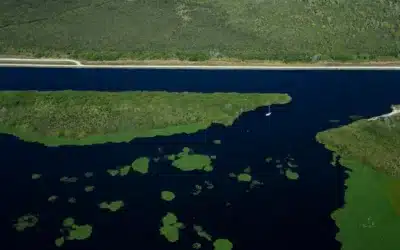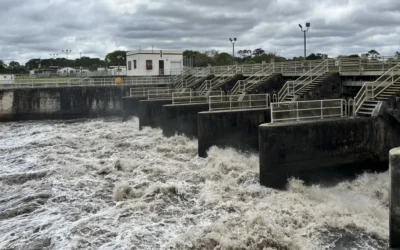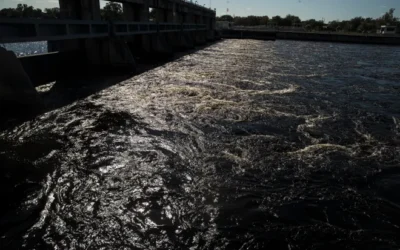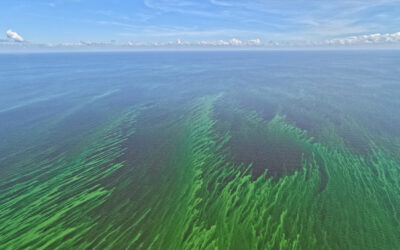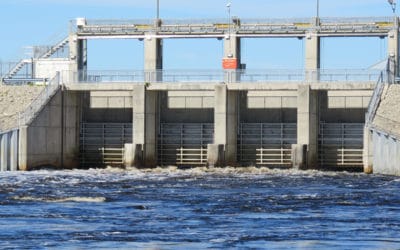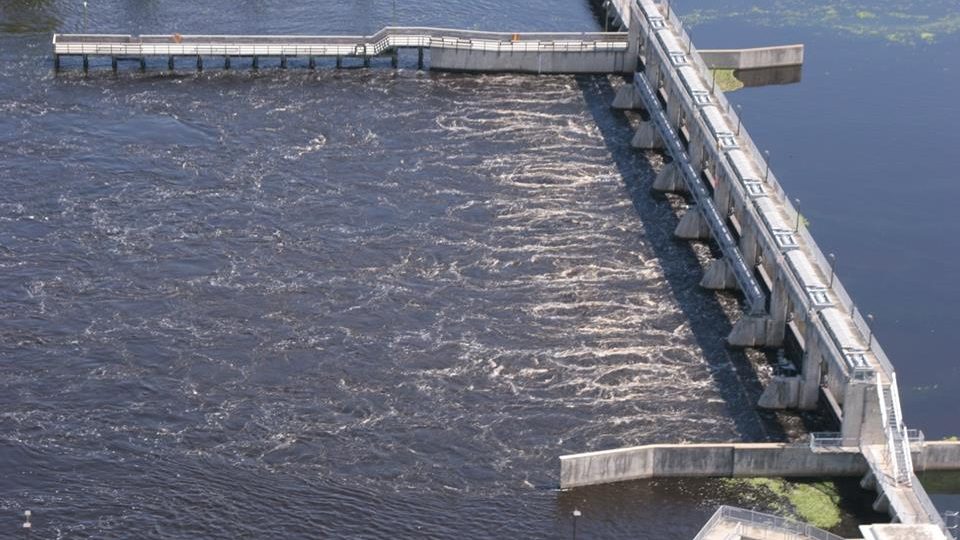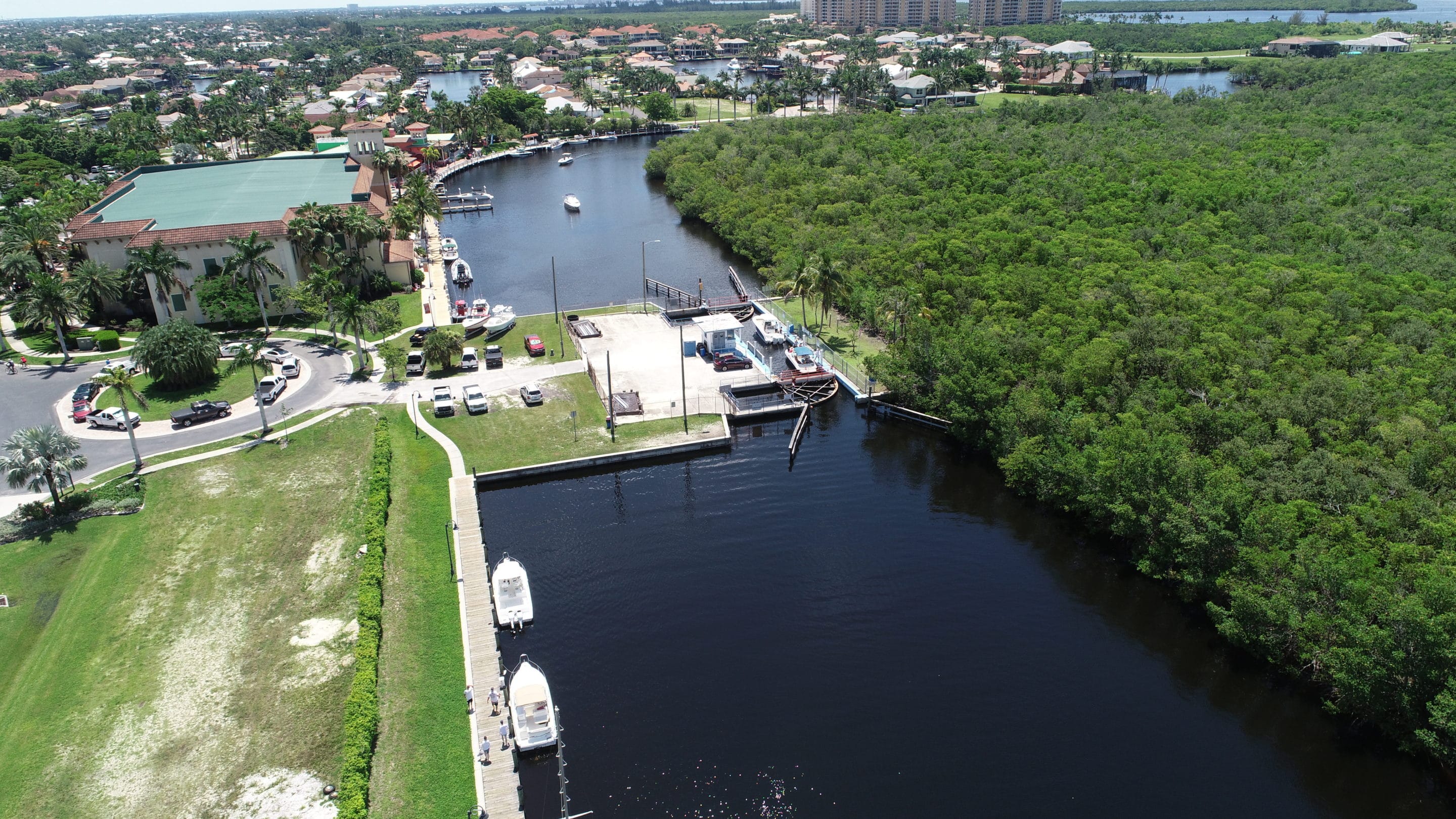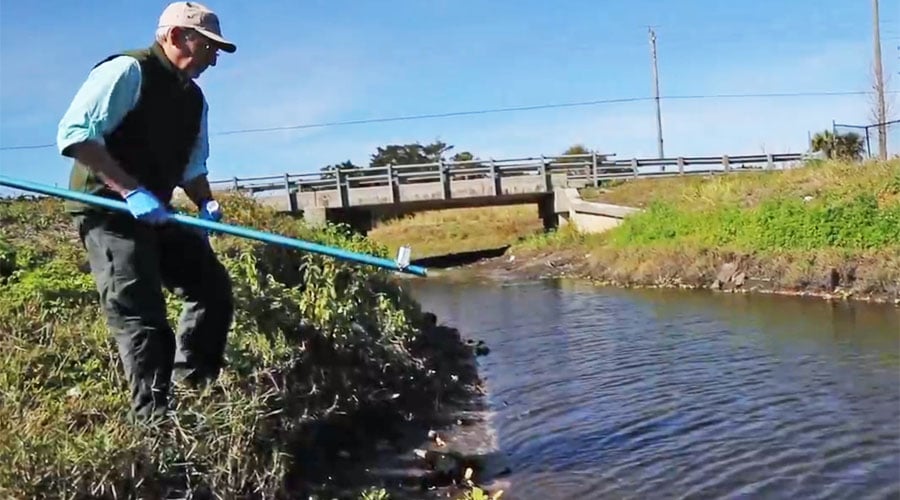Issue:
Lake Okeechobee Discharges
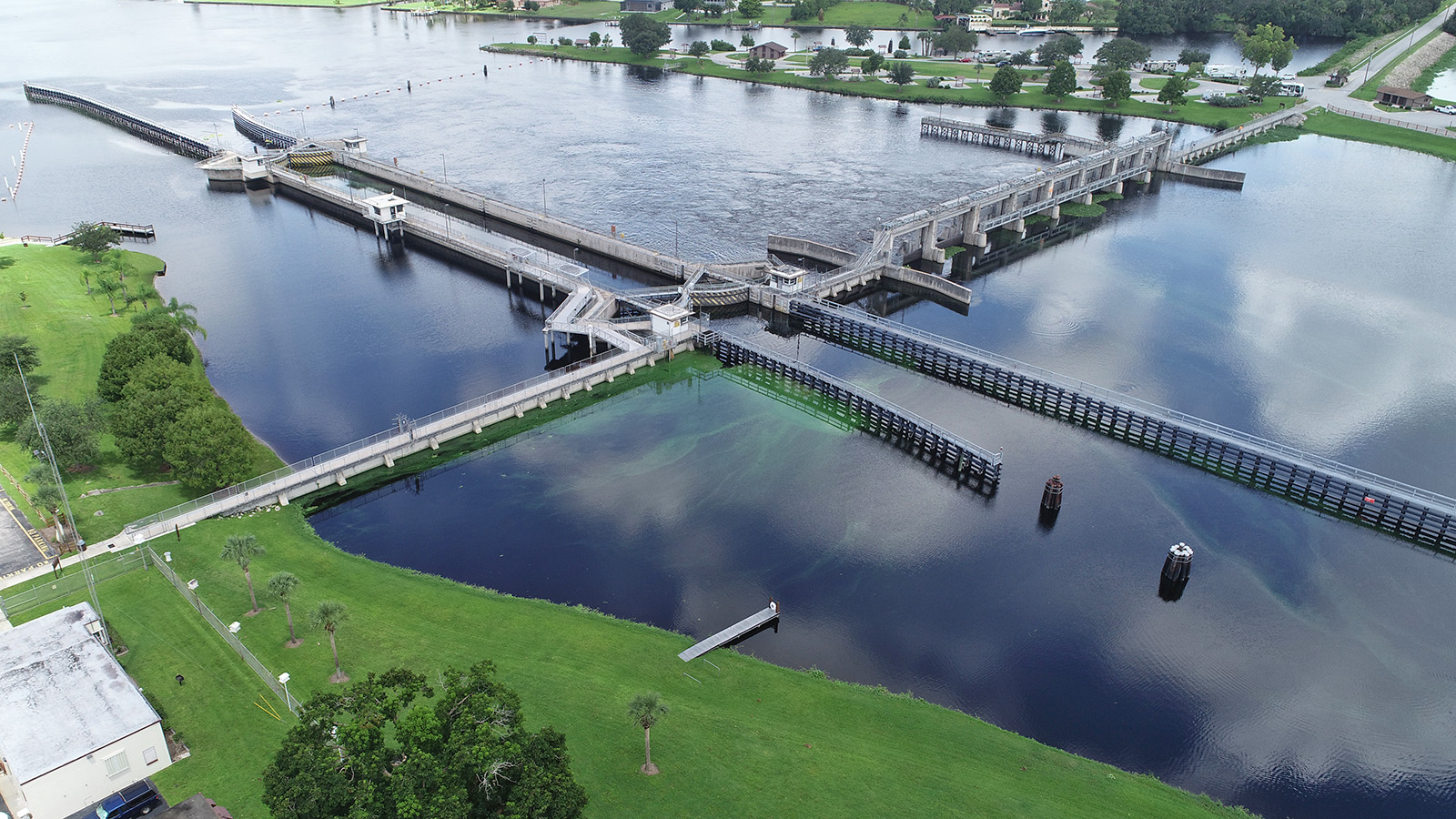
Harmful Discharges
Lake Okeechobee is often referred to as the “liquid heart” of Florida. Unfortunately, over the years, the Lake has become heavily polluted by run-off from agriculture and development in Central & South Florida.
As it was designed in 1947 to avoid flooding south of the lake, the Caloosahatchee and St. Lucie rivers are the two “safety valves” of the system during high water events. Water from Lake Okeechobee is now routinely discharged to these rivers and sent to tide in the Gulf of Mexico and Atlantic Ocean. This practice is also starving Florida Bay of the freshwater it naturally received through the historic Everglades.
In the wet season, massive amounts of nutrient polluted water is now being sent to the Caloosahatchee River. This nutrient rich water is exacerbating harmful algal blooms of increasing scope and frequency.
The federal Army Corps of Engineers is responsible for the Lake’s operation. The Corps’ operational manuals consider public safety and many other objectives set forth by the state’s South Florida Water Management District.
Minimum Flows & Levels
To complicate matters for the Caloosahatchee, our brackish water estuary thrives with a certain amount of freshwater sustaining Vallisneria tape grass near Fort Myers. When dry season rainfall is not enough to suppress salinity levels, tape grass die-offs occur.
As a result of these two seasonal swings, and water mismanagement by government agencies, the Caloosahatchee often suffers from too much freshwater in the wet season, and not enough freshwater in the dry season.

Useful Links
Lake Okeechobee Status

There are a number of tools we use to gather information about the current status of harmful algal blooms on the Lake, as well as the flows being overseen by water managers. Here are a few of the best:
Related News Stories
Lake Okeechobee
What are all the discharges about? The latest on Lake O
The federal agency charged with managing Lake Okeechobee levels is considering larger scale water releases to the Caloosahatchee River in hopes of helping thousands of acres of lost submerged grasses recover.
New release plans for Lake O may reduce red tide in Gulf
Environmentalists say a new federal playbook for managing Lake Okeechobee’s water levels could reduce the size and frequency of red tide incidents off Naples, Marco Island and other Gulf Coast communities.
Will we see Lake Okeechobee discharges this year to the Caloosahatchee? What to know
Calusa Waterkeeper Codty Pierce said only time will tell how well LOSOM works for the Caloosahatchee River.
Lake Okeechobee once again covered with Blue-Green Algae
Look at this video shot by Ralph Arwood for Calusa Waterkeeper over the Lake this past Sunday. Everywhere you look you see the slimy green algae floating on the surface of the lake.
Calusa Waterkeeper Petitions EPA for Cyanotoxin Standards in Florida
Calusa Waterkeeper is among five conservation organizations and the City of Stuart, Florida to petition the Environmental Protection Agency to set limits on the dangerous algae bloom toxins that now routinely threaten the health of Floridians and wildlife.
Army Corps resuming releases of polluted Lake Okeechobee water down the Caloosahatchee
Lake Okeechobee discharges are flowing again as parts of the Caloosahatchee River have slowed to a crawl in recent days.
Make a Donation
Get Notified
Priority Issues
Harmful Algal Blooms
Cyanobacteria & Red Tide
Cyanobacteria (blue-green algae) and Karenia brevis (red tide) have been making major impacts on Southwest Florida.
Lake Okeechobee Discharges
Revise System Operating Manual
The Caloosahatchee River often suffers from too much freshwater in the wet season, and not enough freshwater in the dry season.
Cape Coral Spreader Canals
Nutrient & Sediment Loading
The City of Cape Coral is working to remove large storm-water barriers to make recreational boating more convenient.
Bacteria Monitoring
Fecal Indicator Bacteria
Calusa Waterkeeper has been at the forefront of monitoring this Fort Myers tributary for fecal bacteria indicators.

























